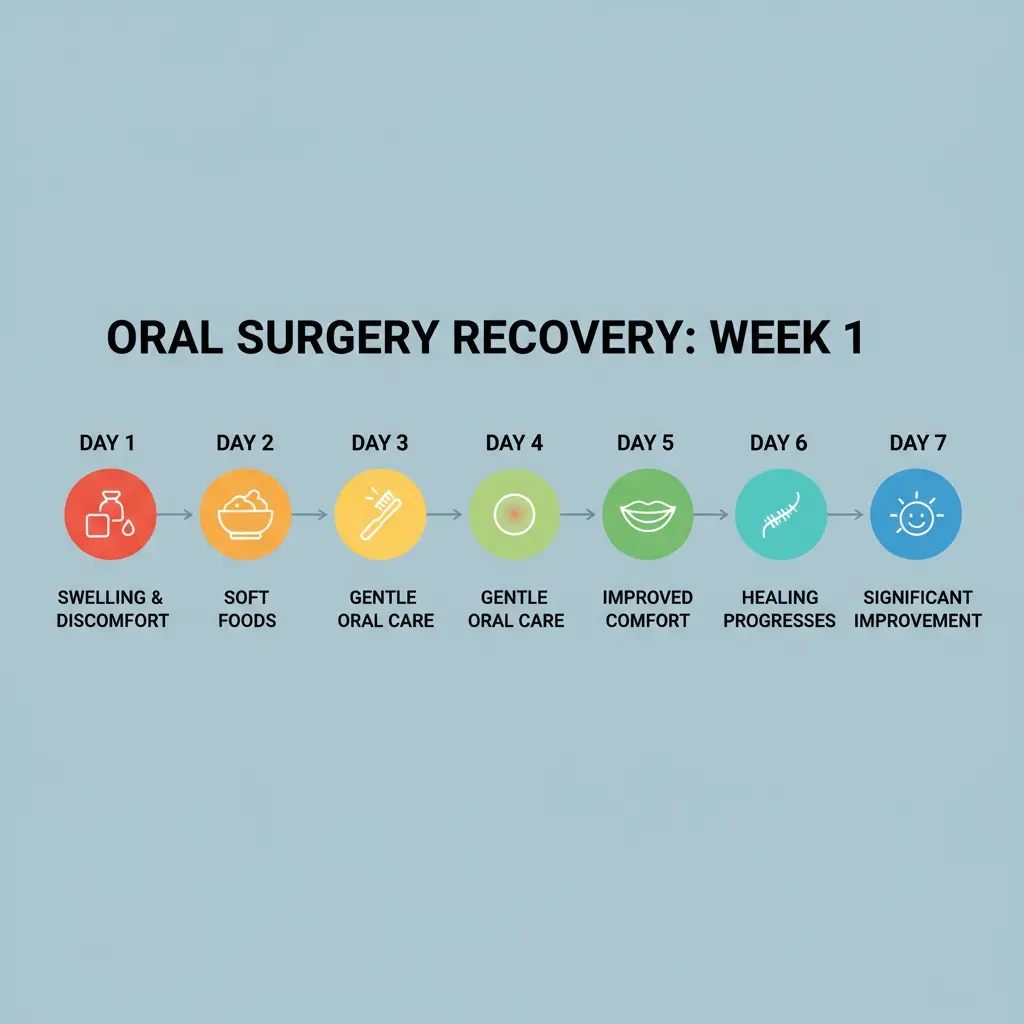When Can I Use a Straw After Wisdom Teeth Removal?

|
Getting your Trinity Audio player ready...
|
Undergoing wisdom teeth removal is a common procedure for many people in their late teens or early twenties, but the recovery process requires careful attention to ensure proper healing. Following your oral surgeon’s instructions on diet, oral hygiene, and activity is essential, and one question that often arises is: When can I use a straw after wisdom teeth removal? Although it may seem harmless, using a straw too soon can create suction that dislodges the protective blood clot, leading to painful complications like dry socket. Understanding the risks and knowing when it is safe to reintroduce straws is key to a smooth and successful recovery.
At first glance, this might seem like a small and unimportant detail. However, improper use of a straw too soon after surgery can lead to painful complications. One of the most serious risks is a condition called dry socket, which occurs when the protective blood clot at the extraction site is dislodged. Without this clot, the underlying bone and nerves are exposed, resulting in severe pain and delayed healing. Understanding why straws are discouraged and when it is safe to reintroduce them is a crucial part of recovery.
The Critical First Week

Your oral surgeon or dentist will provide specific guidelines. These are tailored to your individual case. However, general recommendations exist to ensure optimal healing. The primary concern with straw usage after wisdom teeth removal stems from the suction created. This suction can dislodge the crucial blood clot forming in the extraction site.
This blood clot is vital for proper healing. It acts as a protective barrier for the exposed bone and nerves. Therefore, extreme caution is necessary. Adhering to professional advice regarding straws and other activities that generate suction is critical. This contributes significantly to the overall density of your oral health post-surgery.
Why Straws Are a Problem: The Suction Effect
Using a straw after wisdom teeth removal creates a vacuum in your mouth. This exerts significant negative pressure on the delicate healing site. This suction is the primary reason why straws are strictly prohibited. It’s especially important during the initial recovery phase.
The blood clot that forms in the socket after extraction is crucial. It initiates the healing process. This clot acts as a protective barrier for exposed bone and nerve endings. If this clot becomes dislodged, it exposes the underlying bone and nerves. This leads to a painful condition known as dry socket, or alveolar osteitis.
Understanding Dry Socket: A Painful Complication

Dry socket not only causes intense pain but also delays healing. It can increase the risk of infection. This impacts the overall density of your recovery experience. Dry socket is characterized by a throbbing pain. This pain can radiate to your ear, temple, or neck. It often comes with a foul odor or taste in your mouth. It typically develops a few days after the extraction.
Preventing dry socket is a key aspect of post-operative care. Avoiding straws is one of the most effective measures. Beyond straws, other activities that generate suction should also be avoided. These include spitting forcefully, smoking, or even blowing your nose vigorously. Adhering to these precautions is essential. It maintains the integrity of the blood clot. This ensures a smooth, pain-free recovery. It contributes to the long-term density of your oral health.
The Recommended Waiting Period: How Long to Wait
The general consensus among oral surgeons and dentists is clear. Avoid using a straw for at least 5 to 7 days after wisdom teeth removal. This timeframe is crucial for initial healing. However, this period can vary. It depends on the complexity of your extraction. It also depends on your individual healing process.
For simple extractions, some professionals might suggest a shorter waiting period. This could be as little as 3 days. More complicated cases, such as impacted wisdom teeth, may require a full week or even longer. Always follow the specific instructions provided by your oral surgeon. They understand your surgical outcome and healing trajectory best.
Safe Drinking Alternatives: No Straw Needed

Since using a straw is discouraged, especially during the critical initial healing phase, knowing how to safely consume liquids is important. The simplest and most recommended method is to drink directly from a cup or glass. Allow the liquid to flow gently into your mouth.
Tilt your head back slightly and let gravity do the work. Avoid any forceful sucking or slurping motions. For individuals who find this challenging, particularly with numbness or discomfort, a spoon can be used. Carefully scoop liquids into your mouth. This method provides controlled intake and eliminates any risk of suction. It safeguards the delicate blood clot and promotes uninterrupted healing. This maintains the density of your recovery.
General Post-Operative Care Tips

Beyond specific advice on straws and dry socket, comprehensive post-operative care is essential. It ensures a swift and comfortable recovery after wisdom teeth removal. Pain management is a primary concern. Your surgeon will likely prescribe pain medication or recommend over-the-counter options. Take these as directed to manage discomfort effectively.
Swelling is also common. Apply ice packs to the outside of your face. Do this particularly during the first 24-48 hours. This can significantly reduce swelling. Apply ice for 20 minutes on, 20 minutes off. This maximizes its effectiveness. These measures contribute to a more comfortable healing process. They support the overall density of your recovery.
FAQs About When Can I Use a Straw After Wisdom Teeth Removal?
1. How long does it take for a dry socket to heal?
Dry socket pain usually improves within 7–10 days with treatment. Complete healing takes a few weeks as new tissue fills the area. Prompt care from your oral surgeon ensures proper recovery.
2. Can I accidentally get a dry socket without using a straw?
Yes. Other causes include smoking, spitting, vigorous rinsing, poor oral hygiene, or a history of dry socket. Following post-op instructions lowers your risk.
3. What are the signs that my wisdom tooth extraction site is healing well?
Good healing signs are reduced pain and swelling, no bad taste or odor, and healthy gum tissue forming. A stable blood clot should remain in place.
4. Can I drink coffee or hot beverages after wisdom teeth removal?
Avoid hot drinks for 24–48 hours. Heat can disturb clot formation and cause swelling. When reintroducing coffee, make sure it’s lukewarm and sip gently.
5. When can I resume normal eating habits?
Start with soft foods for 3–5 days, then move to solids as you feel comfortable. Avoid crunchy or sticky foods that may disturb the extraction site.
Conclusion
Navigating the recovery period after wisdom teeth removal requires not only patience but also careful adherence to specific post-operative guidelines. One of the most emphasized instructions is avoiding straws during the early healing stage. Many patients often ask: When Can I Use a Straw After Wisdom Teeth Removal? The reason behind this advice is the risk of developing a painful condition known as dry socket, which occurs when the protective blood clot at the extraction site becomes dislodged. This clot is essential for proper healing, and losing it can expose nerves and bone, leading to significant discomfort and delayed recovery.
By understanding why straws are problematic, you can take proactive steps to ensure a smoother and less painful healing process. Instead of using a straw, adopt alternative drinking methods such as sipping directly from a glass or using a spoon for thicker liquids. These simple changes make a big difference in protecting the surgical area. Always remember that your oral surgeon’s instructions are paramount, as they are tailored to your unique situation and health needs.
Patience is key, but so is consistency in following recommended care. Maintaining gentle oral hygiene, eating soft foods, and being mindful of any activities that create suction are essential steps toward full recovery. Asking your oral surgeon directly When Can I Use a Straw After Wisdom Teeth Removal? ensures you have a clear, personalized timeline for safely resuming normal habits. With diligence and care, you can preserve your long-term oral health and well-being, avoiding unnecessary setbacks while supporting a successful healing journey.






